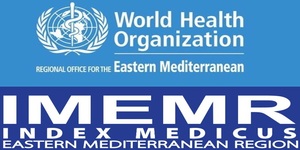Quality of Life for Patients with Epilepsy in Baghdad City.
DOI:
https://doi.org/10.36321/kjns.vi20142.2556Keywords:
Quality of life, Patients, EpilepsyAbstract
Objectives: To determine quality of life for patients with epilepsy in Baghdad city and to find out relationship between demographic characteristics (age, gender, educational level, marital status and socioeconomic status) and quality of life, and to find out relationship between clinical data and quality of life.
Methodology: A descriptive study is carried out in neurological outpatient clinics in Baghdad Hospitals (Baghdad Teaching Hospital, AL Yarmouk Teaching Hospital, Neurosurgical Hospital and Neuroscience Hospital) for period of Dec. 15th 2012, to 30 July 2013. To achieve the objectives of the study, a non probability "purposive" sample of 100 patients that diagnosed as epileptic by neurologists, who were visit the neurological outpatient clinics of the above listed hospitals were selected according to the criteria of the study sample. Data were collected by using questionnaire which has three parts, first part consists of sociodemographic data (8) items, second part consists of special clinical data for patients with epilepsy (6) items, and the third part special survey for quality of life (quality of life in epilepsy-31). Reliability of the questionnaire was determined by the use of pilot study, and its validity determined by panel of experts (19) expert. Data was gathered by interview technique using the questionnaire format and data was analyzed by application of descriptive statistics includes frequencies, percentage, mean of scores and standard deviation and inferential statistical methods.
Results: The findings of the study indicated the quality of life for patients with epilepsy in Baghdad city were in
moderate level, also the results showed significant relationship between (educational level and quality of life=
0.010, socioeconomic status and quality of life= 0.000, duration of disease and quality of life=0.020 frequency of
seizure) and quality of life, and non significant relationship between (gender=0.559, marital status=0.180,
occupational status=0.099, residence0.329, type of seizure=0.783 and number of antiepileptic drugs=0.148) and
quality of life.
Conclusions: The study concluded the quality of life for patients with epilepsy were in moderate level=55.9. The majority of patients with epilepsy was young with low educational level and had moderate socio-economic status. More than half of the study sample is single and housewives. More than half of the patients with epilepsy had poor seizure control.
Recommendations: The study recommends increase the patient's awareness to challenges that result from
epilepsy, by improving individual's social support systems through group therapy and family therapy. Use education and training programs (regular lectures for nursing staff) to improving the expertise of nurses this is play an essential role in fostering patients care. Raising public knowledge and attitudes towards people with epilepsy booklets should be designated special for this purpose and education by Television programs. The researcher suggested that further study can be done to assess nurse's knowledge about how to deals with epileptics patients.
Downloads
Downloads
Published
How to Cite
Issue
Section
License
Copyright (c) 2015 Sabah Abdullah Jafaar/ Wadad Kamel Mohammed

This work is licensed under a Creative Commons Attribution 4.0 International License.













